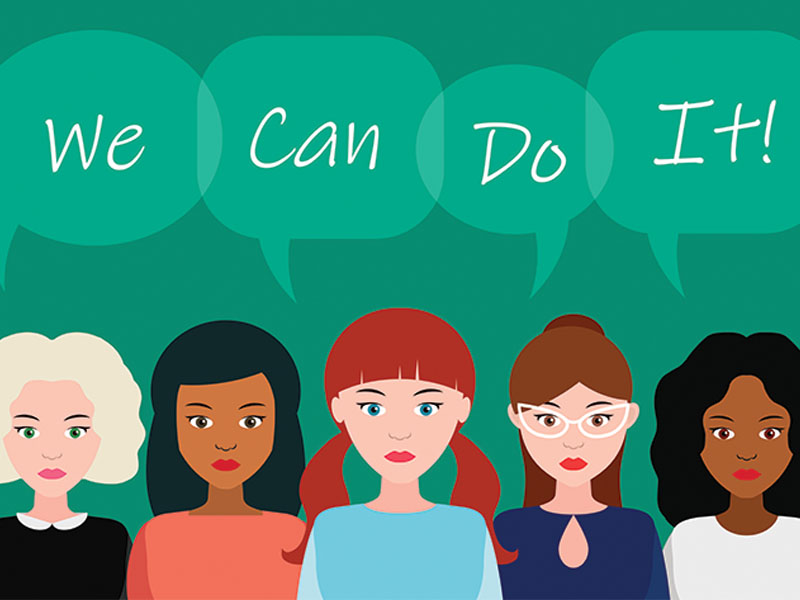“There never will be complete equality until women themselves help to make laws and elect lawmakers.” – Susan B. Anthony, 1897
Anthony was right. It wasn’t until 1920, when women gained the right to vote, that the pace toward women’s equality gained momentum. Women have come a long way in the past 100 years. So, this March in honor of Women’s History Month, celebrate women’s equality by remembering the accomplishments of some of history’s most dedicated and resilient women.
A History of Subordination
Until the emergence of women’s movements, American women were considered inferior to men. Though some inequalities persist still today, they pale in comparison to that of only a century ago. Women were denied the right to vote or obtain an education, unable to work in certain occupations and couldn’t hold office. Their rights in the home were severely limited, as well. They couldn’t write wills, sign contracts or obtain loans and had minimal property rights. Fathers owned their daughters until marriage, at which point their husbands took possession.
A multitude of historical events and accomplishments have taken place over the last 150 years. These landmarks have brought American women the freedom we possess today, making us complete and independent women.
The Road to Equality
The women’s suffrage movement didn’t come into full swing until the mid-1800s. But years earlier, courageous women began carving a path toward independence. In 1792, Mary Wollstonecraft, in her book “A Vindication of the Rights of Women,” argued, “I do not wish them [women] to have power over men; but over themselves.”
In the early 19th century, girls were encouraged to attend elementary school to reduce illiteracy. But those who desired to continue their education were often banned from it. Not until 1837 were women able to attend the same schools as men. In that year, Oberlin College became the first coeducational institution in the United States by admitting four female students. Still, this was a rare exception for several decades to come, and women’s institutions remained few and far between.
The beginning of the women’s movement was in 1848. That’s when Lucretia Mott and Elizabeth Cady Stanton called a women’s rights convention to be held in Seneca Falls, New York. The purpose was “to discuss the social, civil and religious rights of women.” At the convention, a “Declaration of Sentiments and Resolutions,” stating that “all men and women are created equal” and defining the goals of the women’s movement was signed.
Over the years, disputes arose within the women’s movement, dividing it in 1869 into the more conservative American Woman Suffrage Association (AWSA) and the more radical National Woman Suffrage Association (NWSA).
Susan B. Anthony, of the more radical group, registered and voted in Rochester, New York, in the 1872 presidential election. She was arrested several days later and taken to trial. During that same election, Sojourner Truth was denied the right to vote in Grand Rapids, Michigan, after she demanded a ballot.
Four years later, Elizabeth Cady Stanton, an ally of Anthony, wrote a “Declaration and Protest of the Women of the United States” and requested to present it at Philadelphia’s centennial celebration. Stanton’s request was denied; however, Anthony and four other suffragists, unwilling to be silent, boldly rushed to the speaker’s platform and forcefully handed over the document.
Not long after, in 1878, a Woman Suffrage Amendment was introduced to the United States Congress granting women the right to vote. The 19th Amendment, however, would take over 40 years to pass both the House and Senate. In 1920, a year following its passage, the amendment was ratified, marking a new era for women.
In 1923, the Equal Rights Amendment was proposed. Its purpose: to eliminate gender discrimination. In 1972, nearly 50 years following its proposal, Congress passed the Amendment. It still fell short of three states for ratification, and in 1982 was defeated. Its deadline for ratification had expired.
Still, the years between saw a significant change. In 1936, birth control was ruled legal for preventing pregnancy. The ability of women to limit their family size began with the introduction of reliable condoms in 1859. It played a crucial role in women gaining equality, as they were no longer forced into roles of lifelong child-rearing. In 1960, the FDA approved birth control pills. Finally, in 1973, the landmark Roe v. Wade case established a woman’s right to abortion, giving women complete control over their reproduction.
Many accomplishments marked the 1960s and 1970s. In 1963, the Equal Pay Act was passed prohibiting discriminatory compensation in federal jobs. The Civil Rights Act, which passed the following year, banned discrimination based on gender and race.
In 1966, the National Organization for Women (NOW) was founded. Its purpose was to promote the Equal Rights Amendment, abortion rights and childcare for working mothers.
Massive marches marked the next couple of decades, with NOW leading the way to women’s reform. One of those marches, in 1973, was to voice outrage over violence against women. Twenty-four years later, the Violence Against Women Act was passed to protect battered women.
Today, feminists are still striving for total equality in areas such as healthcare and equal pay. At the same time, they continue to fight measures that undermine women’s reproductive rights and protections against spousal abuse.
Pioneers of Women’s Equality
Many women today and throughout history have taken risks to bring us independence. The following are just a few who championed women’s rights.
Susan B. Anthony
(1820-1906), co-founder of the National Woman Suffrage Association, dedicated much of her life to the women’s movement. Among other notable actions, she campaigned for women’s suffrage, property rights for married women and equal wages for female teachers. Anthony coined the phrase, “Men, their rights and nothing more; women, their rights and nothing less.” This became the motto of the National Woman Suffrage Association. In 1868, Anthony organized the Working Women’s Association in her campaign to gain better working conditions and fair pay for women. Anthony published “The Revolution from 1868 to 1870.” She also took part in drafting a proposal on which the 19th Amendment was later based and co-authored “History of Woman Suffrage, 1881 to 1886.” In 1904, she founded the International Woman Suffrage Alliance in Berlin, and she also organized the International Council of Women.
Betty Friedan
(1921-2006) wrote “The Feminine Mystique” in 1963, which began the contemporary women’s movement in Britain and the United States. Her book was a challenge to long-held attitudes that a woman’s place was in the home. In 1966, she founded the National Organization for Women; in 1971, the National Women’s Political Caucus; and then, in 1973, the First Women’s Bank. Friedan was also an organizer of the 1970 Women’s Strike for Equality. She later authored “It Changed My Life” (1976) and “The Second Stage” (1981), both related to the women’s movement.
Alice Paul
(1885-1977), of the radical women’s camp, organized a suffrage parade in Washington D.C. in 1913, on the day of Woodrow Wilson’s inauguration. Although violence ensued, it helped the women’s movement to unite. Four years later, the fearless Paul went to jail while picketing the White House along with nearly 100 other suffragists. They were charged with “obstructing traffic.” Most of the women were with the National Woman’s Party that Paul had recently founded. Her group also held a hunger strike that year and had to be force-fed. Paul worked unstoppably toward the passage of the 19th Amendment and the Equal Rights Amendment. In 1938, she founded the World Woman’s Party.
Margaret Sanger
(1879-1966), a nurse, founded the National Birth Control League in 1917 that would later become the Planned Parenthood Federation of America. Sanger’s commitment toward birth control and reproductive freedom for all women was a result of the horrifying deaths and deformity caused by self-induced abortions she had witnessed. In 1916, she opened the first birth-control clinic in the United States, in Brooklyn, and she briefly went to prison for it.
Elizabeth Cady Stanton
(1815-1902) co-founded the National Woman Suffrage Association and became its first president. She was outspoken and better known in her day than even Anthony. Stanton went before the New York State legislature in 1855, where she argued for the expansion of the Married Woman’s Property Law. Along with Anthony, Stanton started The Revolution, a newspaper on women’s rights. She co-authored “History of Woman Suffrage, 1881-1886.” Then, in 1895, she published “The Woman’s Bible,” critiquing Biblical passages that supported the subordination of women. Stanton was the author of the 19th Amendment and organized the International Council of Women in Washington, D.C.



